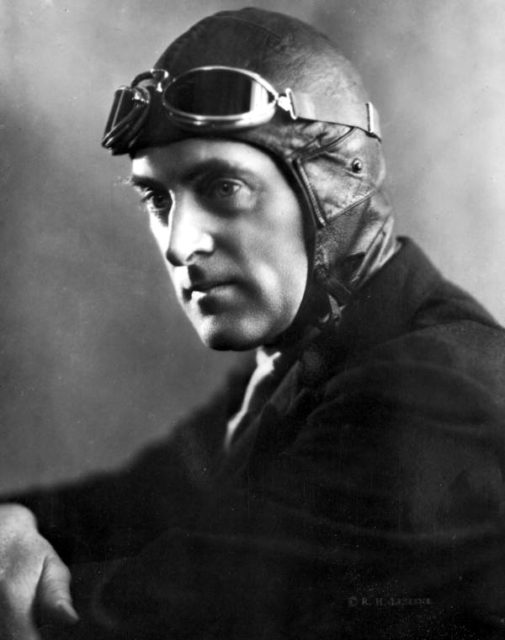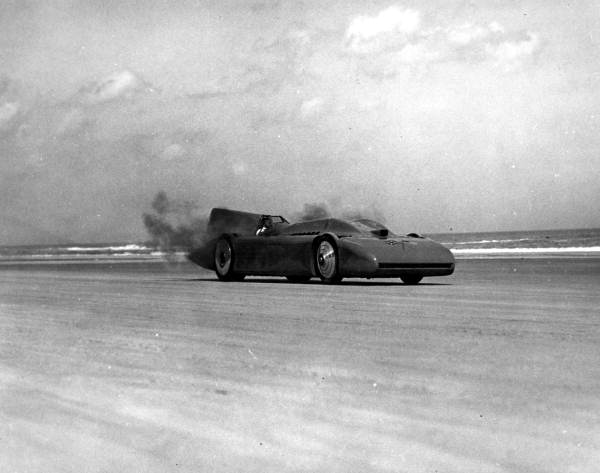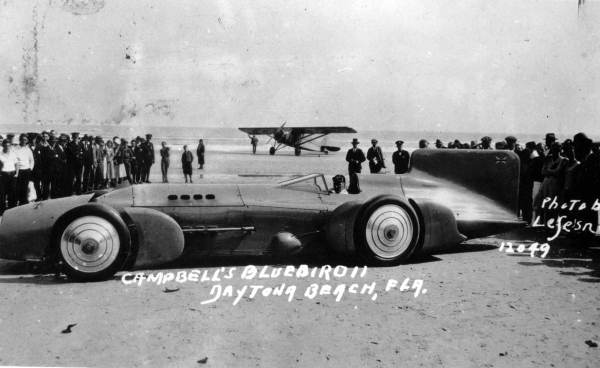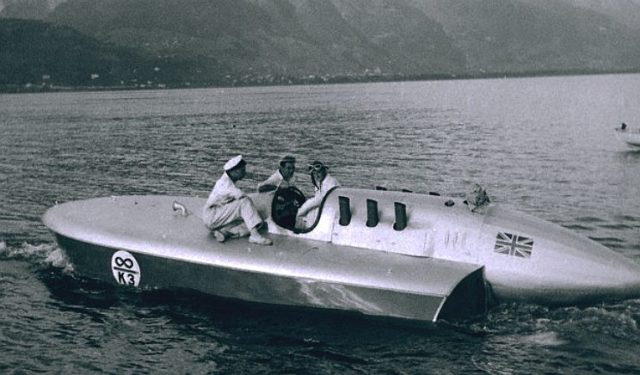Sir Malcom Campbell was not just any normal man he was an English racing motorist and motoring journalist. He broke the world land speed record nine times between 1924 and 1936.
He drove the Campbell-Napier-Railton Blue Bird car which was a land speed racer. He also gained the world’s speed records on water during the 20s and 30s. Years later, his son, Donald Campbell, would follow in his fathers footsteps a carry on the family tradition and he would break speed records on land and on the water.
“World’s record speeds are decided by fractions of a second. Tuning a car for a world mark is therefore a battle against time. To win, you must have a combination of a perfect car, the right course and favorable weather. And I am going to add another requisite–luck, which always plays a large part in such undertakings. By luck I mean what Americans call having the “breaks.” Daytona Beach, Florida is the only place I know where it is possible to make world’s land-speed records. The sand packs almost as hard as cement, and there is sufficient length to get up speed.” –Sir Malcolm Campbell (May 1932).
Campbell decided he needed a more powerful engine for his Blue Bird, along with a chassis and transmission to handle it.
They used a supercharged Napier Lion VIID, with over three times more power than the previous Blue Bird and had much more power than the Golden Arrow’s engine which was the non-supercharged 900 horsepower Lion VIIA.

Although this was not the first-time supercharging had been used for land speed record cars, but it was the first time that supercharging along with large displacement aero engines had been used beforehand for their gross output.
The innovative aerodynamic stabilizing fin that had been used on the Golden Arrow previously was used on Sir Malcolm’s car for the first time.
Henry Seagrave, who was Malcolm Campbell’s nemesis, was killed in the water while attempting the water speed record while Campbell was out looking for new record courses in South Africa.

When Campbell returned, he set off for Daytona with his new Blue Bird, worried about Americans attempting to upset the record.At least Seagrave was British, he said. February 5th, 1931, Campbell pushed the record to 246 mph, and he received great popularity.
When he returned home, he was told that he was to be knighted as Sir Malcom Campbell.
The next year, he pushed the previous record out to 251 mph. That record stood for another year, until he himself broke it with his 1933 Blue Bird car that was powered by a Rolls-Royce engine.

When the turbocharger became an option in 1922, the Lion became the most powerful engine and went on to have great commercial success.
The years between the wars, the Lion was everywhere, and Napier manufactured little else. When they stopped making cars in 1925, they didn’t think to make anything else.
The Lion engine powered over 160 different sorts of aircraft between the wars. In many highly tuned racing versions, the engines could reach 1,300 horsepower, and it was used to break loads of world records: height, airspeed, and distance in aircraft, and boats producing 1,375 horsepower in a highly tuned Lion for a water record of 100 mph in 1933.

Lion engines produced many of Sir Malcolm Campbell’s land speed records, including a record of over 250 mph in 1932 and John Cobb’s 394 mph Railton Mobil Special in 1947-a record that came a long time after the Lion had passed its prime and stood until the 1960s.
British drivers held the record for 32 years.
Lion engines powered many successful entrants in the most prestigious air racing event; the Schneider Cup in 1922 and 1927, but were dropped by Supermarine in favor of the new Rolls Royce engine which was specifically designed for racing.

A person using a vehicle on land and achieving the highest speed possible is how the land speed record is obtained.
There isn’t a single body or entity for validation or regulation; in practice, the Category C (“Special Vehicles”) flying start regulations are used, officiated by regional or national organizations under the sponsorship of the Fédération Internationale de l’Automobile.
The land speed record (LSR) is regulated as the speed over a fixed length course, and averaged over two runs (commonly called “passes”).
Two runs are required in opposite directions within one hour, and a new record mark must exceed the previous one by at least one percent to be validated. There are numerous other class records for cars; motorcycles fall into a separate class.
